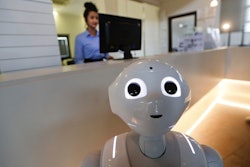The next big breakthrough in computing technology is already here, and it goes by the name of artificial intelligence. It's not exactly a new concept — you can trace the origins of AI all the way back to Aristotle in 4th century B.C. Although recent innovations have enabled many improvements, even over those of the 19th and 20th centuries, it pales in comparison to forecasts for the future.
What Is a Smart Factory, and How Is It Better?
A smart factory uses strategic planning, data-driven resource allocation, machine learning — or AI — and automation to keep costs low and profits high. It also emphasizes sustainability and eco-consciousness above mindless, mass production. Recent smart factory breakthroughs include:
- Strengthening material yields in the semiconductor industry by up to 30 percent
- Improving the accuracy of demand forecasts to reduce consumer energy costs
- Bolstering inventory turns by 25 percent through comprehensive modeling and advanced algorithms
- Achieving a 35 percent reduction in testing and calibration times
Current-gen factories are a marked improvement when contrasted with factories of past generations. They're more energy-efficient, cost-effective and eco-friendly than ever before — but there's still room for improvement.
According to a recent report, more than three-quarters of manufacturers either have an active smart factory program or are currently in the planning stages of one. Forecasts also predict vast enhancements to productivity. The same study found that smart factories could add $1.5 trillion to the global economy by 2021.
AI Isn't Alone in the Smart Factory Future
While AI will play a significant role in the future of the modern smart factory, it's not the only contributor. To maximize industry 4.0's benefits, manufacturers need to balance machine learning with automation.
According to those who've already started their transition to the smart factory, the balance is a delicate one. Next-gen technology, including AI and automation, has the potential to streamline operations and drive productivity in any factory setting. Unfortunately, this often results in lost jobs and a workforce that is forced to adapt to survive.
Some factories, though, experience the opposite effect. Instead of taking jobs away from humans, next-gen robots are, in some cases, creating new jobs. They also fill in to perform tasks that are hazardous to their human counterparts.
These collaborative robots, dubbed cobots, are already integrated into the American workforce. Apart from completing dangerous jobs, they also collect and analyze data, generate automated reports and provide recommendations on potential process improvements.
A technology known as machine vision is used to achieve safety-oriented robots that navigate production lines or travel from one part of the factory to another. These machines rely on a camera that is exponentially more sensitive than the human eye — and that was the easy part of the robot's design. It has such powerful vision that it can spot microscopic defects that are impossible to see with the naked eye.
These robots are also programmed to avoid collisions and injury to humans. In many ways, they're similar to self-driving cars. Some experts even see a market for innovations like self-driving forklifts, although we don't have any prototypes yet.
Some robots take on more advanced tasks, including predictive maintenance and quality control. The application of real-time data streams and the ability to learn from prior actions make robots useful in many different scenarios.
The most sophisticated robots utilize innovations like edge computing and the Internet of Things to connect with other machines, analyze enormous datasets and drive productivity to all-new heights. Not only does this put robots on the frontlines of the recent big data movement, but it also lets them make mission-critical decisions that impact companies, consumers and markets around the globe.
Embracing the Smart Factory Model
Much of the smart factory's success depends on the worker's willingness to embrace change. This often is not people's initial reaction, especially given growing concerns over job security, but it's a movement that's already well underway. It's no longer a matter of whether one wants to embrace automation and AI in the workplace. Instead, it's a race to beat the competition to adopting the smart factory model and gaining all the benefits it has to offer.






















